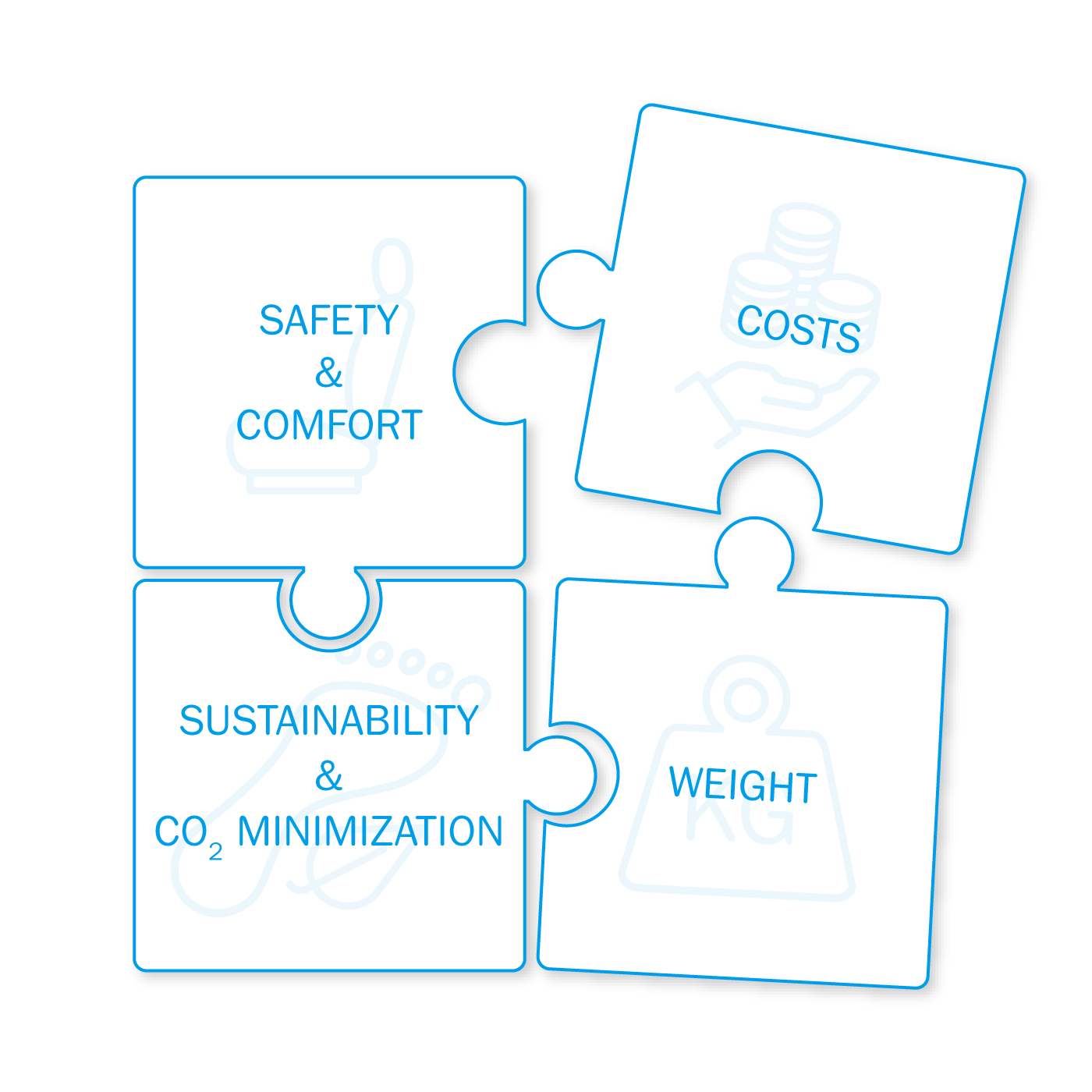Helping bus and coach designers address an array of challenges
The project for investigating the advantages of stainless steel in bus structures originated from the need to help designers of the new generation of buses and coaches to balance a number of current challenges, including safety & comfort, cost, weight, as well as sustainability & CO2 footprint of the vehicle. See Figure 1.

Figure 1. Bus and coach designers face several challenges.
The selection of the right material for the right application is crucial for being cost-competitive. Low cost and non-corrosion resistant carbon steel is used generally, typically in grade S355 as well as the higher strength S460, with both names referring to their minimum yield strength.
In a first of its kind project, Outokumpu worked with the CAD/CAE solution specialist FCMS, the Munich University of Applied Sciences and RotherCONSULT to investigate the advantages of using stainless steel in bus structures. The simulations focused on assessing the weight and cost benefits of Outokumpu Forta H800 compared to carbon steel. To offer the most challenging comparison, the higher strength S460 was selected. The results show that using a high-strength stainless steel for the targeted replacement of carbon steel elements in bus frames could reduce weight by up to 35 % while staying cost-competitive.
The white paper discusses the following topics:
- Why stainless steel?
- Introducing Forta H800 for high strength and high impact resistance
- Welded zones are not weak points during a crash
- Simulation of optimized bus structures
- Requirement-driven lightweight design
- AI-driven approach to simulation
- Simulations based on a generic reference model
- Simulation results
- Analyzing the cost of using stainless steel
- Looking ahead – next steps
You can download the full white paper from the link below.
